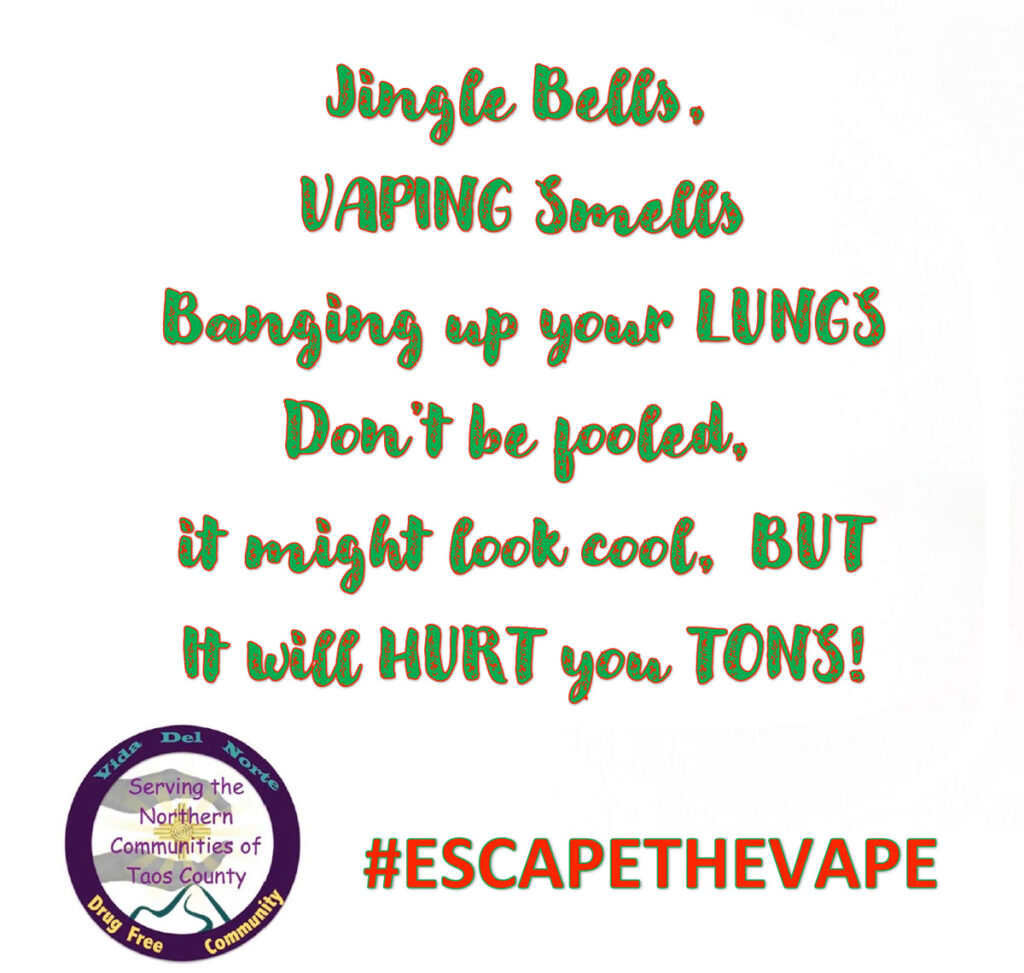Do you vape? Does anyone you know vape? Maybe you are using vaping as a way to quit smoking cigarettes. Maybe some of your friends vape. Are you worried that your kids or youth in your family might vape and you don’t know how to talk to them about it? Do you want some ideas about how to do so?
WHAT IS VAPING?
E-cigarettes (using them is called “vaping”) are electronic devices that heat a liquid and produce an aerosol, or mix of small particles in the air. They come in many shapes and sizes. Most have a battery, a heating element, and a place to hold a liquid. Some e-cigarettes look like regular cigarettes, cigars, or pipes. Some look like USB flash drives, pens, and other everyday items. Larger devices such as tank systems, or “mods,” do not look like other tobacco products.
Many people do not realize that most vaping devices on the market contain nicotine. According to the Centers for Disease Control and Prevention (CDC) website, a recent study found that 99% of vaping devices sold in the US contain nicotine. JUUL E-Cigarettes, one popular vaping device, contains as much nicotine as smoking an entire pack of 20 cigarettes!
Having an addiction to nicotine can be difficult for any individual and it can be especially harmful to youth. Nicotine can harm the developing brain as it continues to develop (until about the age of 25). According to the CDC, using nicotine in adolescence can harm the parts of the brain that control attention, learning, mood, and impulse control. In addition, the CDC warns that using adolescents who use nicotine are increasing the risk of future addiction to other drugs.
Vaping does not produce harmless “water vapor.” Here are the harmful/potentially harmful substances, including:
- Nicotine
- Ultrafine particles that can be inhaled deep into the lungs
- Flavorings such as diacetyl, a chemical linked to a serious lung disease
- Volatile organic compounds
- Cancer-causing chemicals
- Heavy metals such as nickel, tin, and lead
Vida Del Norte’s 2019 Youth Risk and Resiliency Survey shows that 68.1 percent of Questa High School students reported that they have used some form of tobacco product in the 30 days prior to the survey and 24.1 percent of Questa Middle School students reported using tobacco products. Many parents and caretakers may not be aware that their child is vaping.
HELPFUL RESOURCES
The Vida Del Norte coalition would like to remind you that it is possible to quit vaping. There are many resources available to educate youth and adults on the dangers of vaping, and also to help people to quit, as follows:
The Truth Initiative website, truthinitiative.org, contains many resources on the dangers of vaping and tobacco use, as well as resources to quit vaping. One of these resources—BecomeAnEx—is a free, digital platform and online community that has helped over 910,000 people develop the skills and confidence to successfully quit. Their research has shown that following the BecomeAnEX quit plan quadruples a tobacco user’s likelihood of quitting.
Operation Parent (operationparent.org) has many educational resources on vaping and other topics, such as mental health, alcohol, drugs, relationships, and parenting basics.
Finally, please check out vidadelnorte.com/vape for many additional resources about the dangers of vaping and how to quit.




